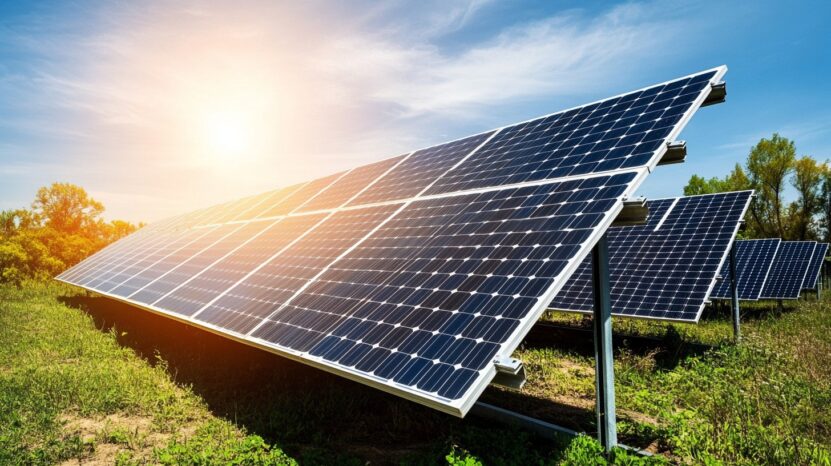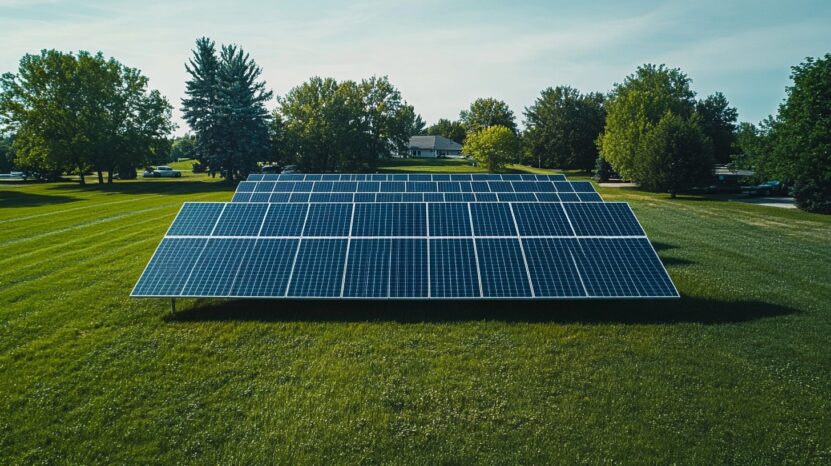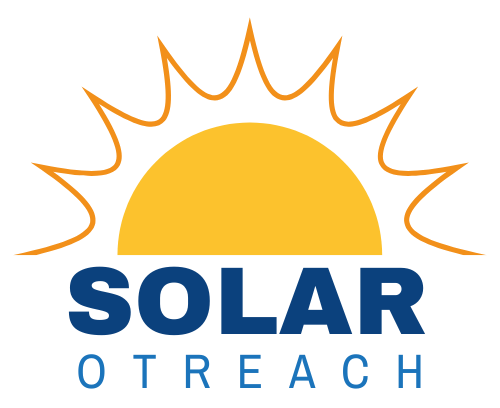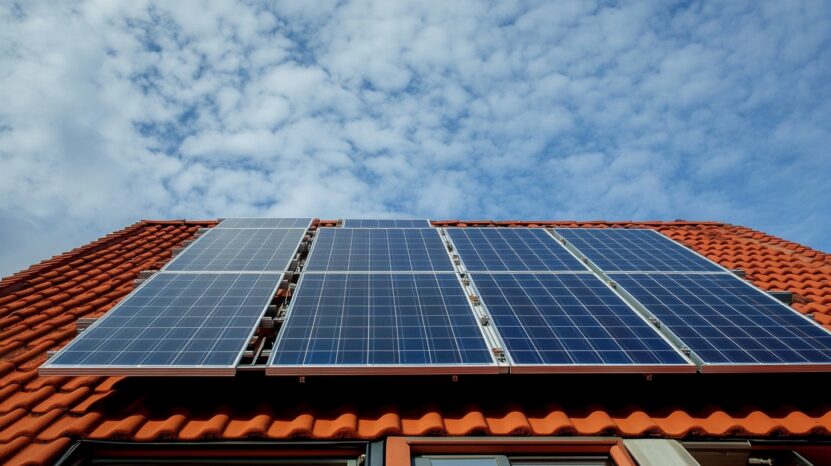TOPCon (Tunnel Oxide Passivated Contact) technology represents a significant advancement in solar cell efficiency.
Introduced in 2013 by the Fraunhofer Institute, it has revolutionized the photovoltaic (PV) industry by providing an alternative to the widely used PERC (Passivated Emitter and Rear Cell) technology.
TOPCon solar cells leverage a tunnel oxide layer to minimize recombination losses and improve electrical conductivity, making them a breakthrough in solar energy generation.
Let us talk about it.
How TOPCon Solar Cells Work
TOPCon solar cells are designed to enhance efficiency by incorporating a tunnel oxide passivated contact structure.
The design helps reduce recombination losses and increases electrical conductivity.
- Composed of N-type cells doped with phosphorus, which differ from the P-type cells doped with boron commonly used in traditional solar cells.
- A tunnel oxide layer is used to passivate the contacts, ensuring that metal contacts do not directly touch the silicon layer.
- The cell features a thin silicon dioxide (SiO₂) layer, combined with a doped silicon layer to form a tunneling junction.
Comparison with PERC Cells:
- PERC cells use rear surface passivation to enhance performance, while TOPCon adds the tunneling junction for improved electrical flow.
- TOPCon technology reduces recombination losses, leading to higher efficiency compared to PERC.
- It offers lower series resistance, resulting in better performance under various conditions.
This advanced structure not only enhances electrical efficiency but also ensures that TOPCon cells can perform better in diverse environmental settings, making them highly desirable in the solar energy market.
Advantages of TOPCon Technology
TOPCon solar cells offer a range of benefits that make them stand out as a top choice for the future of solar panels.
Their design and performance improvements over traditional technologies, such as PERC, have made them highly desirable for both residential and commercial installations.
Higher Efficiency
One of the most notable advantages of TOPCon solar cells is their significantly higher efficiency. These cells can achieve up to 28% efficiency, which is a marked improvement over the 22% efficiency typically seen in PERC (Passivated Emitter and Rear Cell) technology.
A higher efficiency means that TOPCon solar cells can produce more energy from the same surface area, maximizing power generation.
For large-scale solar farms or space-constrained rooftop installations, this efficiency boost translates to higher returns on investment and greater overall energy output.
Improved Low-Light Performance
Another standout feature of TOPCon technology is its superior performance in low-light conditions. These cells are designed to generate more electricity even in early morning, late afternoon, or cloudy weather.
Unlike traditional cells, which may see a significant drop in output during low-light hours, TOPCon cells maintain relatively high performance.
Higher Bifaciality
TOPCon cells offer a much higher bifaciality factor, reaching up to 85%. This feature allows them to capture sunlight from both the front and the back of the panel.
In applications where light reflects from surrounding surfaces—such as on rooftops, over reflective ground materials, or in elevated solar arrays—this bifacial capability dramatically increases energy capture.
Bifacial solar panels are highly efficient in environments where they can take full advantage of both direct and indirect sunlight, making them a preferred choice for certain types of installations.
Temperature Resistance
TOPCon solar cells have a lower temperature coefficient compared to other technologies, meaning they experience less power loss in high-temperature environments. Traditional solar cells tend to lose efficiency as temperatures rise, but TOPCon cells are more resistant to this effect.
That makes them particularly suitable for use in hot climates or regions with fluctuating temperatures. Their ability to maintain high levels of performance in heat makes them more reliable and efficient for year-round use in diverse weather conditions.
longevity and Reduced Degradation
One of the long-term benefits of TOPCon solar cells is their reduced degradation rate over time. Most solar cells lose efficiency as they age due to various environmental factors such as UV exposure, moisture, and heat.
These cells, however, have been designed to degrade at a much slower rate, ensuring a more consistent power output over the course of 25 to 30 years.
The longevity not only increases the return on investment but also lowers maintenance and replacement costs for solar panel owners, further enhancing their value over the long term.
Challenges and Disadvantages

Despite its many advantages, TOPCon technology faces a few challenges that may affect its widespread adoption. One of the primary obstacles is the higher manufacturing costs.
The production of TOPCon cells requires the use of more silver paste on both sides of the cell, which drives up material costs compared to PERC technology.
These increased costs can make TOPCon cells less attractive for projects where budget constraints are a significant factor.
Another challenge is the susceptibility to UV-induced degradation (UVID). Prolonged exposure to ultraviolet light can degrade the performance of TOPCon cells over time, potentially affecting their long-term efficiency.
While research is ongoing to mitigate this issue, it remains a concern for applications in regions with intense sunlight.
Technologically, TOPCon cells face hurdles in the production process. For example, there is a need to reduce the amount of silver used in production to lower costs.
Manufacturers must adapt their existing processes to accommodate the specific requirements of TOPCon cell production, such as new passivation and contact techniques.
Overcoming these challenges will be crucial for the large-scale deployment of TOPCon technology.
Market Trends and Future Outlook

TOPCon technology is rapidly gaining traction in the solar energy market due to its performance benefits and potential for cost reduction. In recent years, it has captured a growing share of the market, with TOPCon accounting for about 10% of solar installations.
As the technology matures, its market share is expected to increase significantly.
- Experts forecast that TOPCon will dominate the solar technology market by 2025, with an estimated 60% market share by 2033.
- As the cost of production decreases through innovations and scaling, the adoption of TOPCon is likely to accelerate.
Cost-effectiveness:
- While initially more expensive than PERC cells, ongoing research aims to reduce material costs by finding alternatives to silver.
- The larger scale of production is expected to further lower costs, making TOPCon a more cost-effective solution over time.
TOPCon’s future looks promising, as the technology addresses key demands in the renewable energy sector for higher efficiency and durability. With advancements in manufacturing and material sciences, TOPCon could soon become the industry standard for solar cells, driving significant growth in global solar energy production.
Summary
TOPCon technology has emerged as a breakthrough in solar cell efficiency, offering significant performance improvements over existing technologies like PERC.
From solar panel carports to rooftop installations, Topcon Technology is setting new standards in efficiency!
With its potential to enhance solar energy generation, reduce power loss, and provide long-term reliability, TOPCon is poised to play a critical role in the future of renewable energy.
Its market growth and technological advancements make it a strong contender to lead the solar industry in the coming years.

